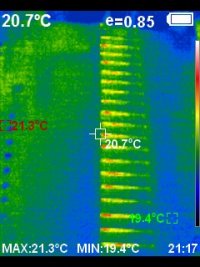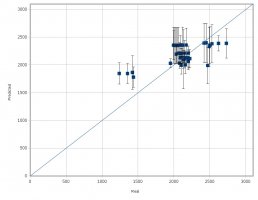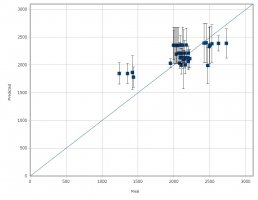I'm currently developing a freely usablecapacity prediction.
The usage will be quite simple:
Input:
Output:
I used Wolf's and my ownDatabase to train3 differentsurrogate models. I'm not sure which one will be more suitable, so I did test predictions of ~90 unmeasured cells. I will measure them in the next days and we will see realtime, how good the predictors will perform or not.
Here you can see the test dataand the predictions.I will update the results dayly if measured:
https://docs.google.com/spreadsheets/d/1gfSAhdyL-qo7WtE69umzEC9Mz1LkAM2r13CfJyEt3E8/edit?usp=sharing
I will do this "real time" test is to see ifthe model helps mein a real harvesting process or not.
So this leads me to the next question:
If you would use such a model, how would you prefer to do it?
- Maybe as a website script where I put a table of Pre IR/V and nominal capacities and get the predicted Capacity+Deviation
- Or another option would be to define minimum requirement for the cells. Maybe my personal requirement is 80% of original capacity and min. 2000mAh. Then the Tool would givea probability between 0% and 100% that this cell will fit your requirements or not.
Or maybe you have another idea or suggestion?
When it's done, I'll make the tool available to everyone and hope that it will help you.
The usage will be quite simple:
Input:
- Internal Resistance measured before charging
- Voltage before charging
- Nominal capacity
Output:
- Predicted Capacity + Standard Deviation
I used Wolf's and my ownDatabase to train3 differentsurrogate models. I'm not sure which one will be more suitable, so I did test predictions of ~90 unmeasured cells. I will measure them in the next days and we will see realtime, how good the predictors will perform or not.
Here you can see the test dataand the predictions.I will update the results dayly if measured:
https://docs.google.com/spreadsheets/d/1gfSAhdyL-qo7WtE69umzEC9Mz1LkAM2r13CfJyEt3E8/edit?usp=sharing
I will do this "real time" test is to see ifthe model helps mein a real harvesting process or not.
So this leads me to the next question:
If you would use such a model, how would you prefer to do it?
- Maybe as a website script where I put a table of Pre IR/V and nominal capacities and get the predicted Capacity+Deviation
- Or another option would be to define minimum requirement for the cells. Maybe my personal requirement is 80% of original capacity and min. 2000mAh. Then the Tool would givea probability between 0% and 100% that this cell will fit your requirements or not.
Or maybe you have another idea or suggestion?
When it's done, I'll make the tool available to everyone and hope that it will help you.

















